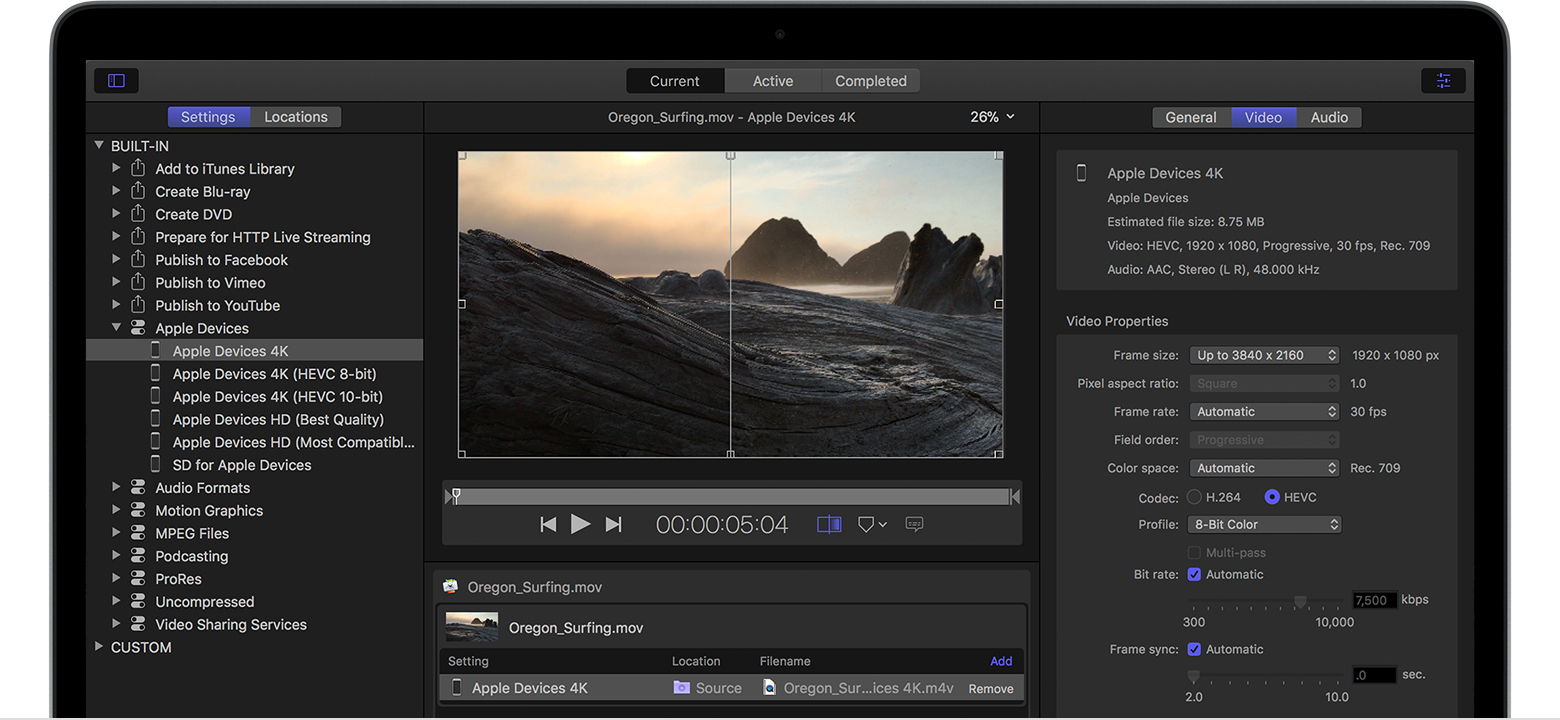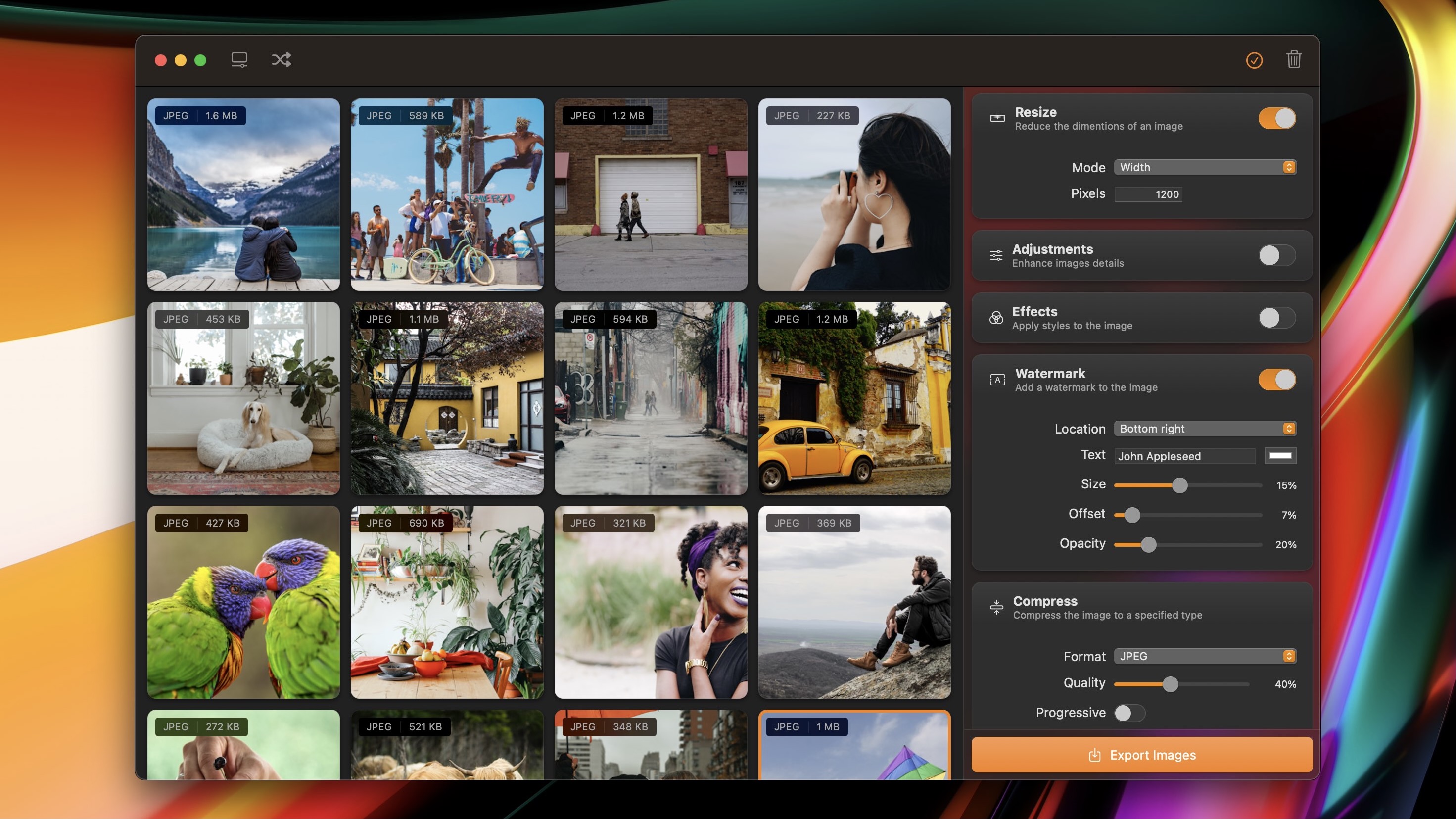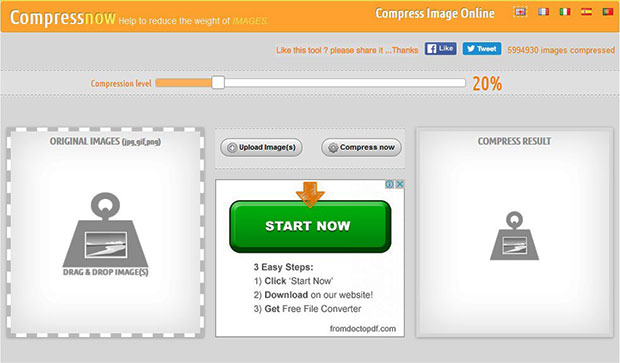

- #MAC BATCH COMPRESS IMAGES HOW TO#
- #MAC BATCH COMPRESS IMAGES INSTALL#
- #MAC BATCH COMPRESS IMAGES FULL#
- #MAC BATCH COMPRESS IMAGES CODE#
How to compress JPG on Mac without losing quality How to compress JPEG on macOS using Preview JPG image compression on Mac can be done in several ways, and discussed below are some of the most widely and popularly used image compressor Mac tools. So, if you are looking for a way to free up some storage space on your Mac without deleting the images, compression works as the most feasible solution. With the growing collection of images, the space on the system is decreasing. Since they are command line tools, you can easily use them for batch compression of multiple images, as well as automate image compression by adding them to a shell script.With high-end cameras in smartphones these days, capturing images has become frequent and easy, which has put a toll on the storage device of the systems.

In this article, we have learnt how to compress images in Linux using couple of command line tools jpegoptim and optipng. You can get more details about optipng using its man pages. Here is a command to compress all png images in /home/ubuntu. You can also use wildcard characters to compress multiple images present in a folder. Here is an example to compress 3 images using single command. Like jpegoptim, you can compress multiple images by mentioning them one after the other in a space separated manner. $ optipng /path/to/image/fileįor example, here is the command to compress image /home/ubuntu/test.png $ optipng /home/ubuntu/test.png Batch Compress Multiple Images Once you have installed OptiPNG, you can easily optimize and compress images using the following syntax. In this case also, you need to enable epel repository first.
#MAC BATCH COMPRESS IMAGES INSTALL#
Open terminal and run the following command to install OptiPNG in your system. $ jpegoptim /home/ubuntu/*.jpgįor more details about jpegoptim command, use its man pages. For example, here is a command to compress all. You can also use wildcard characters to mention multiple files. $ jpegoptim /home/ubuntu/test1.jpg /home/ubuntu/test2.jpg /home/ubuntu/test3.jpg Here is an example to compress 3 image files in a single command. Just list them one after the other in a space separated manner. You can also use jpegoptim to compress multiple images at once. $ jpegoptim -size=500k /home/ubuntu/test.jpg Batch Compress Multiple Images

Here is an example to compress your image to 500kb. You can also specify the size of your compressed image if you want but it will not be lossless compression, in that case. If you don’t use any option, it will automatically compress and optimize your image.Īlso, please note, jpegoptim will overwrite your existing file by default.
#MAC BATCH COMPRESS IMAGES FULL#
Please use full path to your image file, else it will look for the image relative to your present working directory. $ jpegoptim /path/to/image/fileįor example, if you want to compress the image /home/ubuntu/test.jpg, run the following command. Once you have installed jpegoptim, you can edit images using the following command. Next, install jpegoptim command with the following command. In case of RHEL/CentOS/Fedora/SUSE Linux, you need to enable epel-release before you install jpegoptim tool. Open terminal and run the following command to install jpegoptim tool.ĭebian/Ubuntu # apt-get install jpegoptim It uses Huffman algorithm for image compression. Jpegoptim is a command line tool that allows you to easily optimize & compress JPEG, JPG and JFIF images, using lossless compression. They both compress images without losing its quality.

Here is how to compress images in Linux using jpegoptim and OptimPNG utilities. In this article, we will learn how to compress images in Linux using jpegoptim and OptimPNG commands.
#MAC BATCH COMPRESS IMAGES CODE#
You can even embed the compression code into your application code to automate it. In such cases, command line tools are more useful than GUI tools because you can easily do bulk compression via terminal, or using shell script. There are plenty of tools available for this purpose in Linux. If you have a lot of images that you want to transfer or store, you may need to compress them to save disk space.


 0 kommentar(er)
0 kommentar(er)
